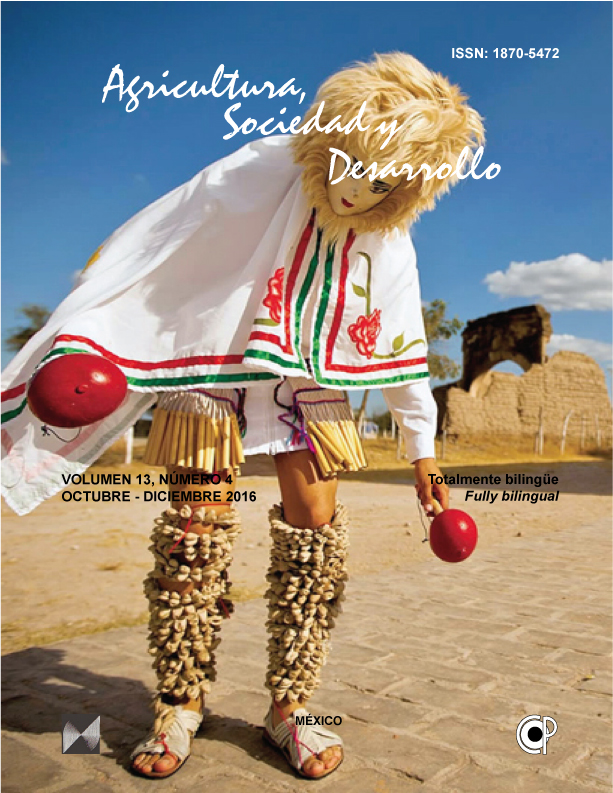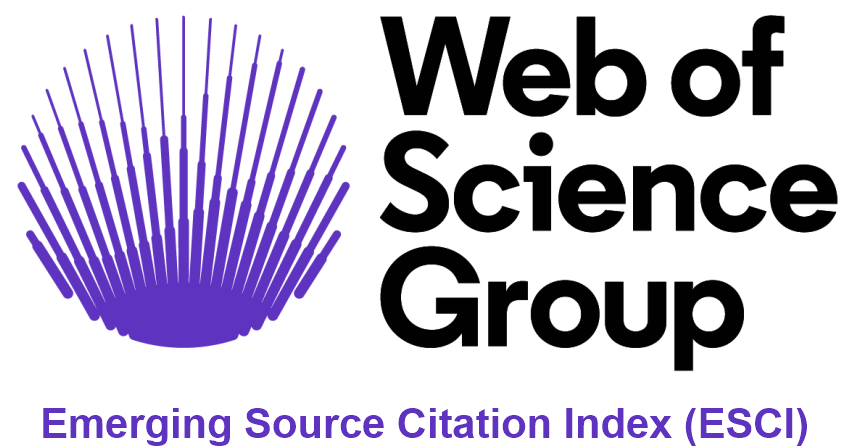Pension program for the elderly in two rural communities: Santa María Tecuanulco and San Jerónimo Amanalco, Texcoco, México.
DOI:
https://doi.org/10.22231/asyd.v13i4.496Keywords:
senior citizen, quality of life, rural community, pensionAbstract
Â
The federal Pension Program for the Elderly is analyzed in two rural communities of the municipality of Texcoco, Estado de México: Santa María Tecuanulco and San Jerónimo Amanalco. The senior citizen (SC) and his/her physical, social and economic condition are studied, and the difficulties of the program are identified, as well as their causes and consequences. The main problems for the SC are that he/she doesn’t have a pension and is incapable of attaining sufficient income for a dignified life, expressed in low income and health deterioration. These factors are manifested in a limited exercise of his/her social rights, economic and functional dependence on third parties, and low self-esteem (depression). The research uses the mixed method: qualitative and quantitative; techniques of social research, observation and participant observation are applied; the information was obtained through a questionnaire with 58 questions, interviewing 78 SCs. The results show that the federal program provides income to improve their quality of life, but does not fulfill the needs and expectations of the SC. The lack of documents requested to be considered part of the program is frequent; most SCs do not have a birth certificate, and the program rejects them without offering a different alternative, so they are not incorporated, and there is scarce empathy when catering to this population.
References
Aguilar, Luis F. 1996. La hechura de las políticas. México, Miguel Ãngel Porrúa. pp: 15-84.
Brambila, José Luis. 2006. En el umbral de una agricultura nueva. México, Universidad Autónoma Chapingo. pp: 20-65.
Cervantes, Lilian. 2013. Apoyos en hogares con al menos un adulto en el Estado de México. In: Papeles de Población,
Universidad Autónoma del Estado de México. Toluca. Vol.
, núm75, enero- marzo. pp: 1-30.
CONAPO (Consejo Nacional de Población). 2012. Proyecciones de Población 2010-2050. México.
CONAPO (Consejo Nacional de Población). 2012. Dinámica
demográfica 1990-2010. Proyecciones de la población 2010-2030; y Programa Nacional de Población (PNP) 2014-1018 en: www.conapo.gob.es/conapo publicaciones.
Chossudovsky, Michel. 2002. Globalización de la pobreza y nuevo orden mundial. México, Siglo XXI. pp: 10-50.
Fierro, Alfredo. 1999. El desarrollo de la personalidad en la adultez y la vejez. In: Desarrollo Psicológico y Educación, Vol. 1. Psicología Evolutiva. Madrid, Alianza editorial.
Gemeren, Edwin Van E. 2010. La Participación de los Adultos Mayores: Problemas de México. México. El Colegio de México. pp: 258-306.
Ham-Chande, Roberto. El envejecimiento en México: el siguiente reto de la transición demográfica. Tijuana, B.C, El Colegio de la Frontera Norte, 2011
Hernández S, Roberto, Carlos Fernández C., y Pilar Baptista. 2010. Metodología de la Investigación (5ª. edición), México, Mc Graw Hill. pp: 24 -30.
Infante, Said, y G. Zarate. 2010. Métodos Estadísticos (8ª reimpresión) México, Editorial Trillas. pp: 11-16.
IEEM (Instituto Electoral del Estado de México). 2010. México.
INEGI (Instituto Nacional de Estadística, Geografía e Informática). 2010. Censo Nacional de Población y vivienda 2010. México.
Jasso-Salas, Pablo. Cadena-Vargas, Edel. Montoya-Arce, y B. Jaciel. 2011. Los adultos mayores en las zonas metropolitanas de México: desigualdad socioeconómica y distribución espacial, 1990-2005. In: Papeles de Población, Universidad Autónoma del Estado de México. Vol. 17, núm. 70, octubre-diciembre. pp: 81-124.
Linton, Ralph. Status y rol. In: Antropología. Lecturas (2ª. edición). España, Mc. Graw Hill. 280 p.
Magdaleno-Hernández, Edgar. Mercedes A. Jiménez Velázquez, Tomás Martínez Saldaña, y Bartolomé Cruz Galindo. 2014. Estrategias de las familias campesinas en Pueblo Nuevo, Municipio de Acambay, Estado de México. In: Agricultura, Sociedad y Desarrollo. México, Colegio de Postgraduados, Vol. 11, Núm. 2. pp: 167-179.
OCDE. 2012. Panorama de las Pensiones 2011. Sistemas de Ingresos al retiro en los países de la OCDE Y DEL G20. Santiago de Chile-Paris, OCDE, Corporación de Investigación, Estudio y Desarrollo de la Seguridad Social CIEDESS. pp: 57-61.
Rubio M, Gloria y Francisco Garfias. 2010. Análisis comparativo sobre los programas para adultos mayores en México. Naciones Unidas. Santiago de Chile. pp: 16-22.
Sen, Amartya. 1992. Nuevo examen de la desigualdad. Madrid, Alianza Editorial. pp: 7-69.
SEDESOL (Secretaría de Desarrollo Social). 2014. Programa Pensión para Adultos Mayores, México. www.sedesol.gob.mx
Sokolovsky Jay. 2010. La respuesta social y económica a la globalización en una comunidad indígena de la sierra texcocana. In: Texcoco en el nuevo milenio. Magazine, R y Martínez S.T (coord) México. Universidad Iberoamericana. 360 p.
Wong, Rebeca, y César González G. 2011. Envejecimiento demográfico en México: consecuencias en la discapacidad. In: Coyuntura Demográfica. México, Núm. 1, noviembre. www.somede.org/coyunturademográfica/número1/. pp: 40-43.
Zarazúa Escobar, y J. Alberto. 2011. El Programa de Apoyos
Directos al Campo (PROCAMPO) y su Impacto sobre la
Gestión del Conocimiento Productivo y Comercial de la
Agricultura del Estado de México. In: Agricultura, Sociedad
y Desarrollo, Volumen 8, Nº 1. pp: 88-105.
Downloads
Published
How to Cite
Issue
Section
License
Authors who publish in this journal accept the following conditions:
- The authors retain the copyright and transfer to the magazine the right of the first publication, with the work registered with the Creative Commons attribution license, which allows third parties to use what is published as long as they mention the authorship of the work and the first publication in this magazine.
- Authors may make other independent and additional contractual arrangements for non-exclusive distribution of the version of the article published in this journal (e.g., including it in an institutional repository or publishing it in a book) as long as they clearly indicate that the work It was first published in this magazine.
- Authors are permitted and encouraged to publish their work on the Internet (for example on institutional or personal pages) before and during the review and publication process, as it can lead to productive exchanges and greater and faster dissemination of the work. published (see The Effect of Open Access).













